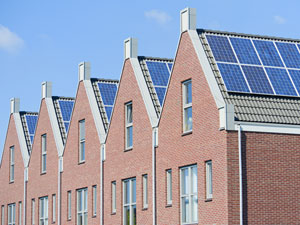A new way of making semiconducting perovskite-based solar cells could result in photovoltaic devices that are 70% cheaper than current commercial models, say UK scientists.
Although dye-sensitised solar cells (DSSCs) have been leading the charge in cheap-to-process cell designs, semiconducting perovskites have been used in recent years to replace the sensitiser in the DSSC architecture. Whilst this reduces the interfacial energy loss that plagues DSSCs, the metal oxide support layers still need to be sintered at 500°C, which is costly.
Continuing their work on a ‘meso-superstructured’ solar cell, where they simplified the design of semiconducting perovskite solar cells, Henry Snaith and his group at the University of Oxford have used colloidal chemistry to deposit a support layer of aluminium(III) oxide. The highest temperature this method needs is a 150°C drying step, which will not only result in cheaper devices, but could also lead to better designs.
Interested to know more? Read the full article in Chemistry World here…
Low-temperature processed meso-superstructured to thin-film perovskite solar cells
James M. Ball, Michael M. Lee, Andrew Heya and Henry J. Snaith
Energy Environ. Sci., 2013, Advance Article
DOI: 10.1039/C3EE40810H











